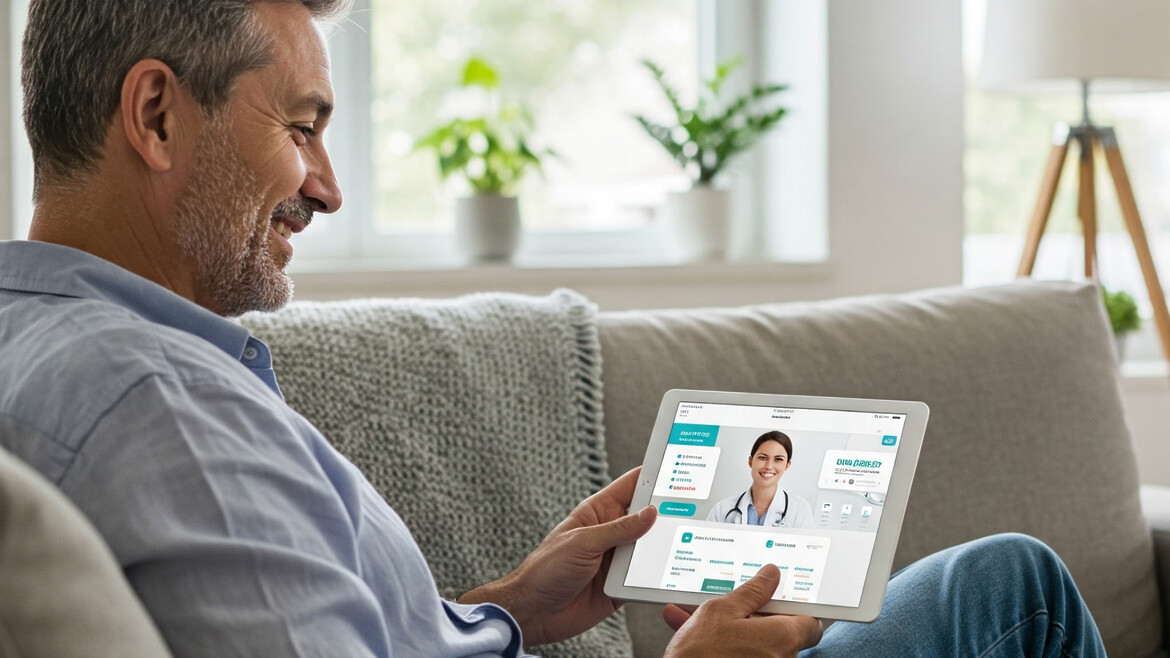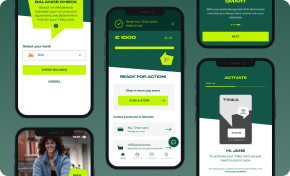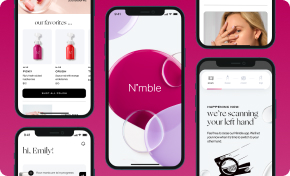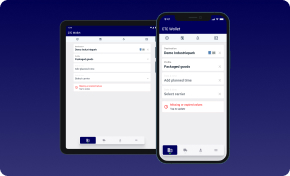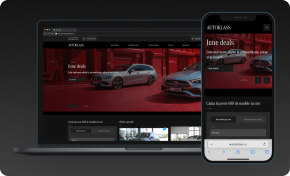Telephone telehealth services enable patients to obtain doctor consultations within their homes, thus demonstrating the modern convenience of Direct-to-Consumer (DTC) health applications. Increasing numbers of DTC health companies now use customer-facing portals and mobile apps to improve their business results. DTC health apps become more effective when appropriately implemented because they enhance patient participation, treatment quality, and operational outcomes. This article demonstrates how technology investments create return on investment (ROI), enabling expansion, improving user satisfaction, and smooth integration with laboratory services and clinical workflows for direct-to-consumer health companies.
Driving Consumer Engagement through Digital Experiences
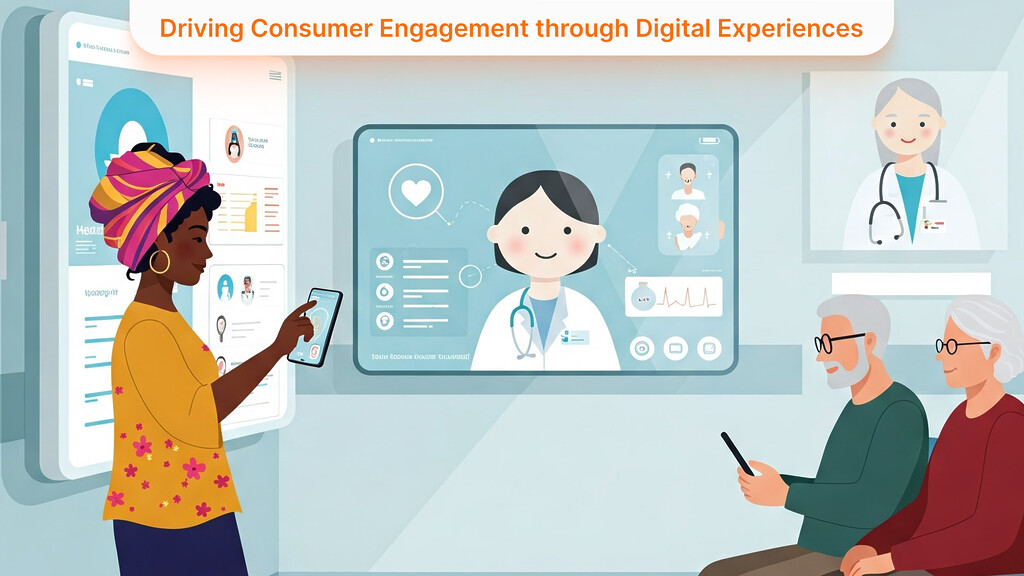
Patients today demand that healthcare providers offer customized digital healthcare experiences that deliver comfortable service. A modernized patient portal or smartphone application improves patient engagement and creates loyalty through its well-designed interface. Ultramed provides health tracking tools with personalized dashboards alongside educational material, which allows users to maintain interest between visits. The application of mobile re-engagement tactics, which include push notifications and reminder functionality, delivers maximum performance for DTC health applications. Businesses can enhance their app user engagement by 88% when they send push notifications, which results in users with push enabled remaining at double the rate of non-push users. Through the app, users receive medication reminders alongside refill alerts and new health tips that maintain their focus on care plan adherence. Extended user engagement produces substantial patient retention and higher lifetime value, which drives upward revenue figures. Patient engagement increases service retention because involved clients complete their treatments and spread excellent feedback.
Making Product Discovery Clear and Accessible
Transform Concepts into Products in Four Weeks with Our Proven TechBoost Program
See Product Discovery ServicesAI integration brings platforms to an elevated level of patient engagement. Healthcare providers operate intelligent conversation bots alongside virtual assistant systems, which offer continuous service throughout the day to help patients with questions and symptom evaluation and provide guidance between appointments. These AI-based interactions minimize patient waiting periods and enable systemic support to provide on-demand assistance to every individual. Research indicates that patient involvement improves by about 30% through health services enabled by AI technology and simultaneously minimizes waiting time intervals for healthcare interactions. The system can automatically deliver particular patient-tailored feedback and proactive well-being check-up messages through its platform for ongoing user interaction. The integration of user-friendly applications along with smart re-engagement strategies enables DTC health companies to develop satisfactory digital encounters that sustain patient devotion throughout their wellness progression.
For further insights into building robust web platforms, check out the Ultimate Guide for Businesses on Web Development.
Enhancing Care Delivery with Telehealth and AI
Customer-facing digital interfaces create new healthcare delivery methods that produce better results and enhance customer convenience. Medical care services accessible through an app or portal allow patients to speak with healthcare providers at any location by enabling video visits, secure messaging, and phone sessions without office visits. The ability to access healthcare on demand creates more satisfied patients who use care services more often. Virtual health visits have gained popularity among patients because 94% of consumers expressed willingness to repeat their experience (this number increased from 80% in 2020). Telemedicine services for routine check-ups and mental health consultation should be a core feature of DTC health companies operating on digital platforms. Patients must navigate easily between mobile app consultations, web portals, and voice assistant interfaces according to their preference for convenience. Patients initiate their healthcare journey using a mobile phone symptom checkup feature, which leads them to schedule video consultations from their computer before requesting prescription information through their voice-controlled device. A flexible approach to health care delivery fits the needs of patients through various channels, which drives better patient engagement for every demographic group.
DTC Telehealth Systems
Improving care delivery through telehealth tools depends on making usability and support systems their primary focus. Telehealth technology recommended by the U.S. Department of Health and Human Services (HHS) requires easy patient and provider navigation through DTC telehealth systems featuring basic interfaces, understandable directions, and available support channels. Telehealth applications must deliver user-friendly interfaces to accommodate all users, especially those with minimal tech expertise, and patients need access to immediate help through voice or chat support for technical problems. Best practice implementation results in better patient-provider encounters while diminishing patient frustration. Design features of telehealth systems should include remote monitoring capabilities that enable patients to transmit blood pressure and glucose measurement results. The system lets healthcare providers monitor patient health parameters outside appointments to identify early health problems and customize medical care.
Integration of AI Technology
Healthcare delivery gets an enhanced effect through the integration of AI technology. Medical staff benefits from AI through data interpretation of patient information and images, as well as value generation from the patient perspective. An AI triage bot can process entered patient symptoms through its algorithm to determine whether telehealth service is necessary or self-care guidance is sufficient. Patients benefit through this system, which helps them reach the appropriate care setting without delay. User data allows AI to generate customized treatment plans through its ability to suggest lifestyle recommendations along with proper product or service recommendations provided by the DTC vendor, which align with user requirements. Many digital therapeutic companies deploy artificial intelligence systems to create personalized care pathways for their users on a large scale. This enables each user to receive customized guidance like a private concierge. Better patient treatment results and improved customer satisfaction emerge from these processes. Research has demonstrated how hybrid AI chatbots in healthcare achieve a 25% decrease in hospital readmissions and simultaneously enhance patient care results for better delivery of medical services.
Experience Our AI Development Excellence
Empower Your Operations with Intelligent AI Integration
Access AI Integration SolutionsFor more insights into exploring compliant AI integration, read the article Navigating FDA Compliance for AI-Powered Healthcare Tools and EHRs.
Operational Efficiency and ROI through Digital Tools

DTC health companies receive dual benefits from their customer portal and app investment because it enhances patient satisfaction and optimizes operational efficiency and return on investment. Digital tools enable organizations to optimize several time-consuming processes that exhaust staff resources. The online portal runs independent scheduling functions while performing automatic billing operations and delivering results without manual intervention. Such simplification minimizes administrative work and avoids mistakes. Integrating lab systems with clinician tools becomes highly important for DTC companies that provide lab tests and telehealth services. Companies remove data entry repetition and waiting time between systems through direct connections between their consumer app, laboratory information systems, and electronic health records. A “streamlined digital lab workflow for specimen collection, testing, and reporting” enhances laboratory productivity and improves patient experiences. The procedure allows customers to send their test orders directly through their app. It automatically directs them to laboratory systems and immediately transmits results to patient portals without phone calls or mail processing. The integration enables faster services and ensures expansion compatibility when volume numbers rise.
Scalability
Digital platforms enable the easy expansion of operations between locations. An established, robust portal/app infrastructure enables easy patient adaptation and expansion to new regions more easily than physical clinic or call center expansion. A single AI chatbot operates at the same time to process thousands of customer inquiries that no human employee could handle separately. The ability to scale their customer base allows DTC health providers to increase profits by not adding support personnel at a direct ratio. Direct-to-consumer telehealth services enable price reductions that amount to 7–20% lower than traditional in-person health clinics, thus saving patients $113 on average per episode or 23% or fewer expenses.
Mobile App Development for a Competitive Edge
Developing Mobile Apps that Engage Your Customers with Your Brand
Explore Mobile App DevelopmentFinancial Impact
The cost advantages stem mainly from programmatic efficiency that decreases missed appointments while shortening sessions for routine matters and better manages healthcare provider staffing. The extended use of digital health solutions generates reduced operational expenses and maintains patient populations, which generate robust returns on investment. Organizations using the omni-channel approach of telehealth combined with in-person visits and digital touchpoints experience direct financial benefits because their physical cost reduction, operational workflow improvements, and patient retention levels increase simultaneously. A completely digitized system gives DTC health companies the power to expand operations while reducing costs.
Advantages
The full realization of these advantages requires following specific execution methods. Patient-facing technology produces several operational improvements, which include:
- Employees benefit from automated workflows that integrate systems to perform follow-up scheduling, test order shipment, and encounter documentation without human intervention.
- A patient portal or application must assemble all medical data in one comprehensive file, including past patient consultations, examination results, and medication prescriptions. Unified patient records eliminate scattered information while facilitating faster clinical diagnosis.
- The system gathers analytical data, which enables users to monitor patterns, systems’ limitations, and potential growth opportunities. Analyzing popular features within the app can help the organization direct its strategic budget.
- Provide in-app feedback surveys and channels to receive instant insights about service problems and patient dissatisfaction so the service can enhance itself. Agile improvements enable efficient operations that maintain patient happiness.
Each cost reduction generated by efficiency also enhances user experience through shorter wait times and fewer errors, reinforcing improved service quality and business performance. Discover how Intelligent Document Processing can drive similar benefits in the article Unlocking Business Efficiency with IDP on AWS.
Omni-Channel Access and Exceptional User Experience
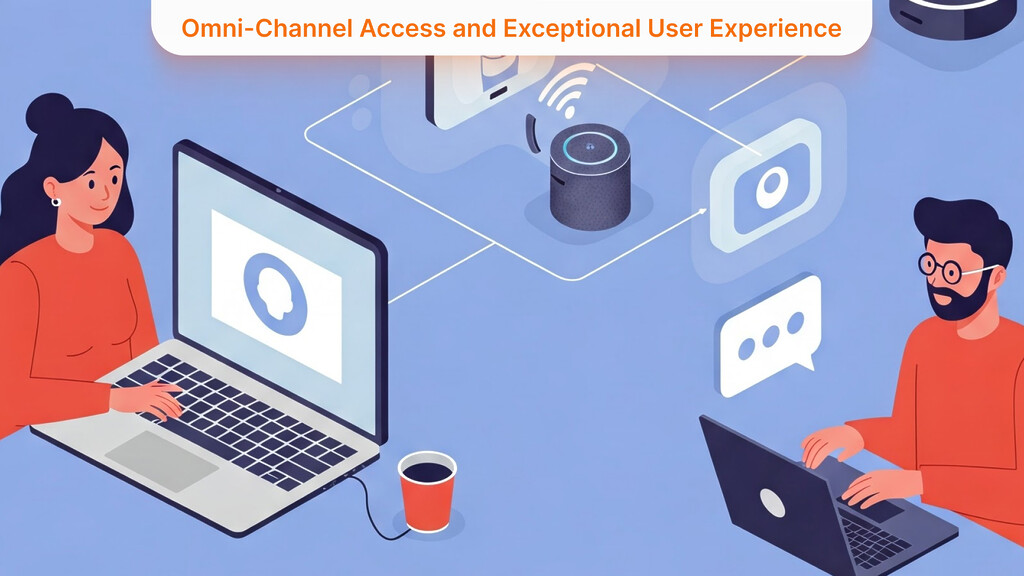
The top DTC health organizations create omni-channel solutions for patients accessing their services through websites, mobile applications, voice-activated assistance, and digital conversation services. Patients experience equal quality healthcare through each DTC health platform they select. The strategy caters to healthcare consumers who utilize diverse touchpoints because they can start with website lab results while conducting telehealth visits on mobile apps and finish with smart speaker medication reminders. The interconnection of these channels lets providers maintain information coherence for patients throughout their various points of contact. Integrating systems correctly becomes crucial because users get frustrated and abandon sessions when information needs to be re-entered between devices. A seamless cross-channel approach creates better patient satisfaction and enhances loyalty toward healthcare services. The patient support system adaptively responds to each individual’s preference between desktops and smartphones because patients maintain comfort and control.
Experience Expert IT Consultancy
Transformative Strategies for Your Technology Needs
Discover IT ConsultingContinue Access to Patient Profile
Research among consumers establishes that ease of use and accessibility are essential factors. The convenience factor ranks highest among 33% of patients seeking non-urgent care. Thus, they naturally prefer services that minimize their access barriers. The most effective method for delivering convenient services is known as omni-channel service. The system enables patients to resume an ongoing interaction through different channels, maintaining continuous communication. A patient starts an intake process through their phone, finishes it on their laptop, and obtains additional assistance from a voice assistant during the same cohesive healthcare interaction.
The same navigation structure and identical account information maintained across channels prevent patients from becoming disoriented. Different service channels provide accessibility benefits because patients with disabilities can use web portal screen readers, while patients with limited internet can utilize phone calls or SMS. Patients who access services through multiple channels can reach your healthcare system from any starting point, which enlarges your patient base.
UX Patient Experience
All communication pathways must adopt user-friendly interfaces according to the previous discussion of HHS telehealth guidelines. Every platform, from websites to mobile applications, must have basic interfaces featuring high-contrast elements and easy-navigable layouts with readable fonts. The tools become more understandable and credible through constant branding alongside uniform terminology. Interaction with contemporary DTC health applications often provides customization features that enable users to manage their preferences, such as communication choices, scheduling preferences, and language options. By satisfying user requirements and demonstrating value to them, businesses can improve their overall experience. A user-centric omni-channel strategy enables DTC health businesses to provide superior customer experiences, distinguishing them from their market competitors.
Explore how emerging technologies like haptics shape user interactions in Exploring Haptic Technology’s Impact on User Experience.
From Innovation to Impact: DTC Health Innovators
The intersection of innovation with care defines the market position of DTC health brands. Businesses that apply custom development solutions gain a proper leadership position among competitors because digital tools transform consumer expectations.
Combining customer portals, mobile apps, telehealth integration, and smart backend systems will improve DTC engagement while streamlining operations, ultimately improving health business performance.
Ready to future-proof your healthcare brand? Contact our expert software developers now to learn how we can develop custom digital applications that achieve your business targets and demonstrate practical outcomes.
Key Takeaways for DTC Health Innovators
#Invest in Engagement
An app and portal system dedicated to patients featuring re-engagement technology, including notifications, makes chatbots and personalized content available to maintain continuous patient involvement, thus boosting patient loyalty and practice expansion. Patients engaged with their care show higher loyalty rates and better medical results.
Telehealth is a Must-Have
Digital platforms require telehealth integration because it enhances patient access and convenience, ultimately resulting in better satisfaction. A telehealth system requires easy-to-use interfaces combined with robust support features. Proper implementation of virtual care services results in a 23% reduction of care episode costs while enabling expansion beyond traditional patient demographics.
Drive Efficiency & ROI via Integration
Patient-facing technology should interface with back-end systems, including EHR and lab systems, together with billing, to automate clinical workflows. Digital streamlining helps reduce operational costs and the prominence of errors throughout a system and enables organizations to expand their capacity. Your organization receives substantial rewards through operational savings, leading to increased patient retention and ROI.
Embrace Omni-Channel Delivery
Your delivery system should function across all channels, including web-based services, mobile services, and telephony services, with a unified interface for patients to find you. The availability of omni-channel service enables easy access to healthcare services and continuous patient care. Your organization can expand its audience reach and create more satisfied patients by maintaining accessible, coherent user interactions across every communication method.
Prioritize User Experience & Support
Design your portals and apps to ensure every user understands their functions, including patients with minimal technological expertise or disabilities. Your technology infrastructure will remain usable when you supply detailed directions and real-time assistance to users. A superior UX design directly affects patient adoption levels, brand loyalty, and market value.
Experience Our AI Development Excellence
Empower Your Operations with Intelligent AI Integration
Access AI Integration SolutionsThe proper emphasis on these areas enables direct-to-consumer health companies and labs to use digital portals and mobile applications as critical assets that improve their business outcomes. Digital strategies with precision yield superior patient relations while bringing operational optimization, which together establish enduring business success in the evolving medical market. Businesses that execute strategic investments into customer technology today will dominate the market of direct-to-consumer health care in the future through improved ROI while building strong relationships with dedicated patients.
